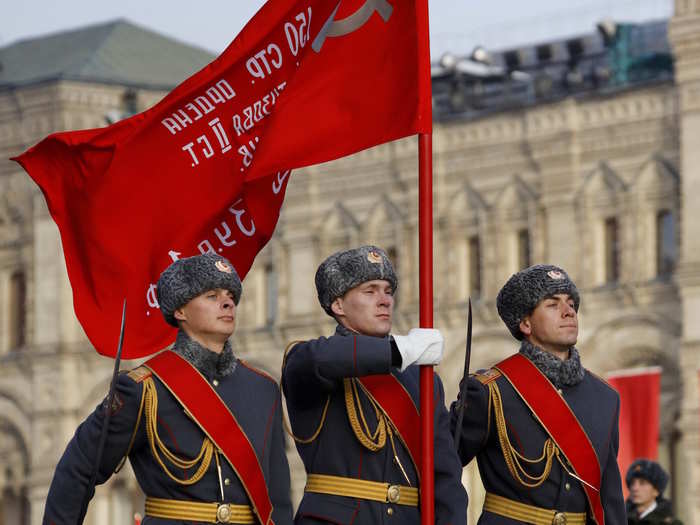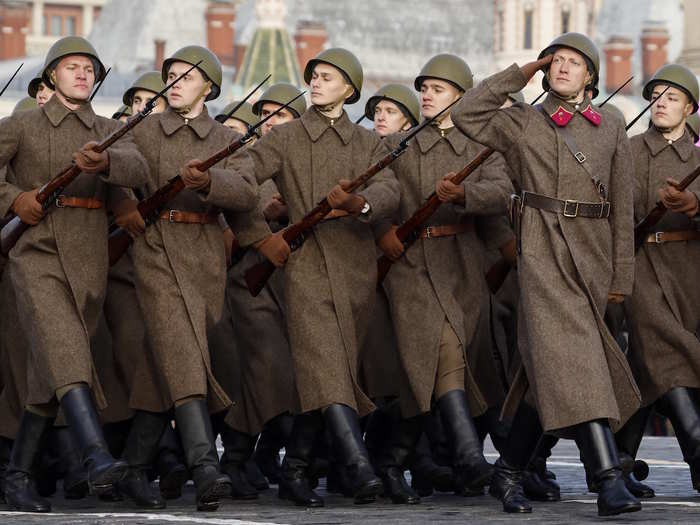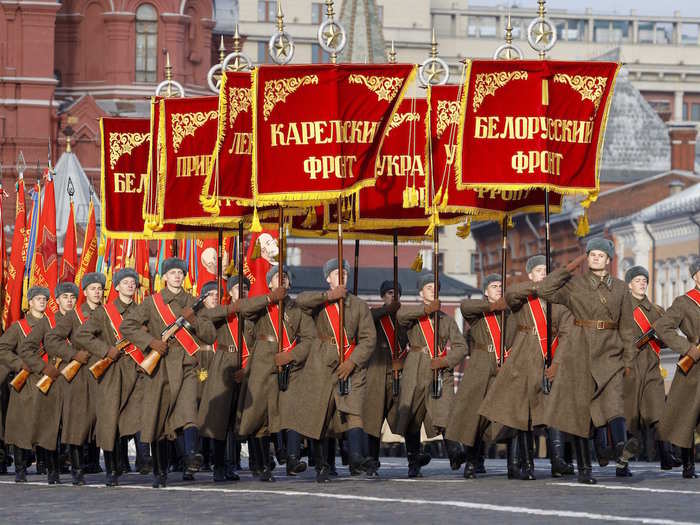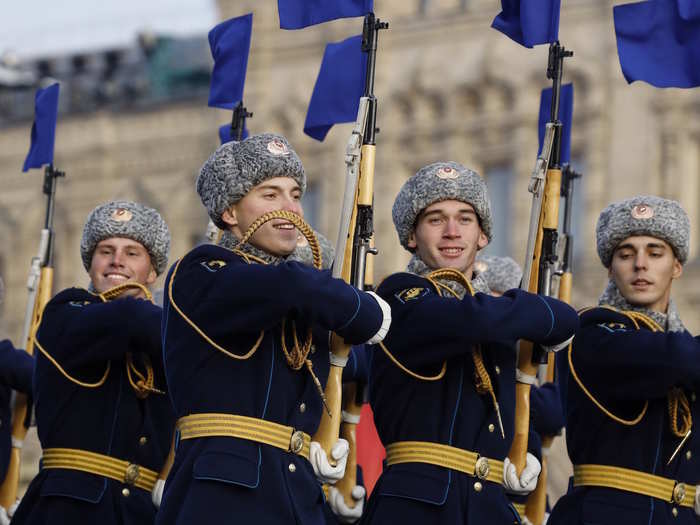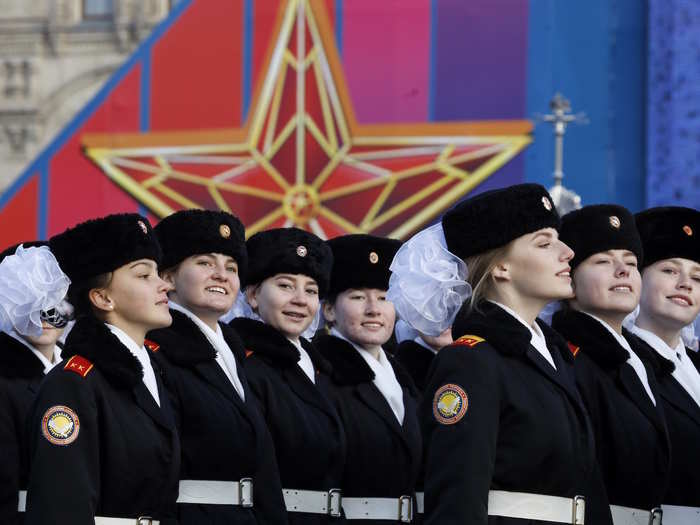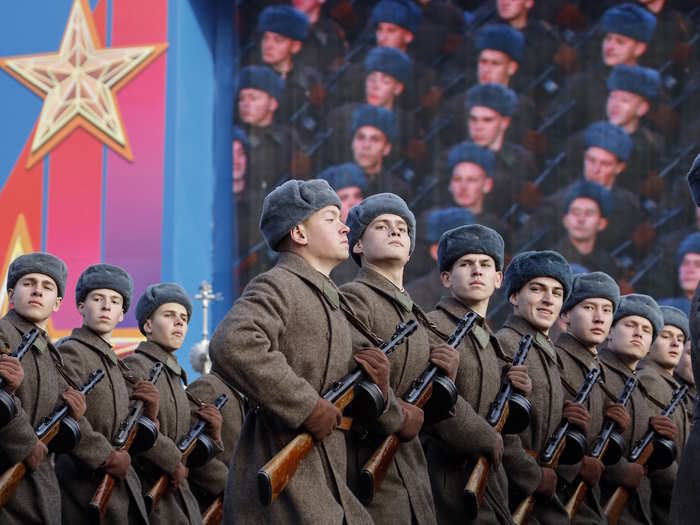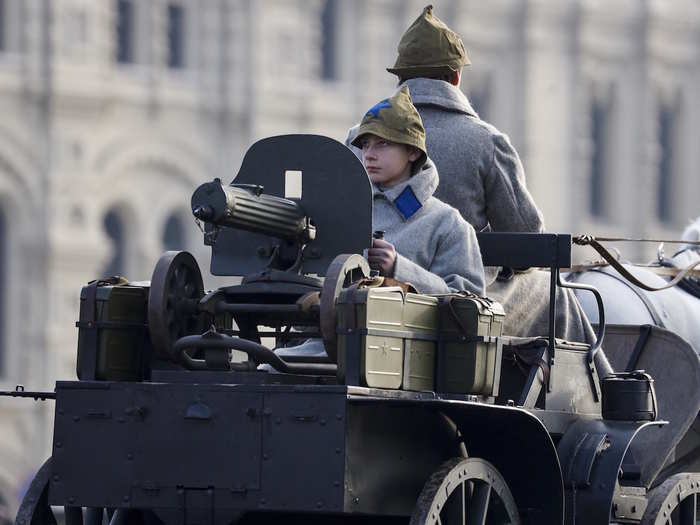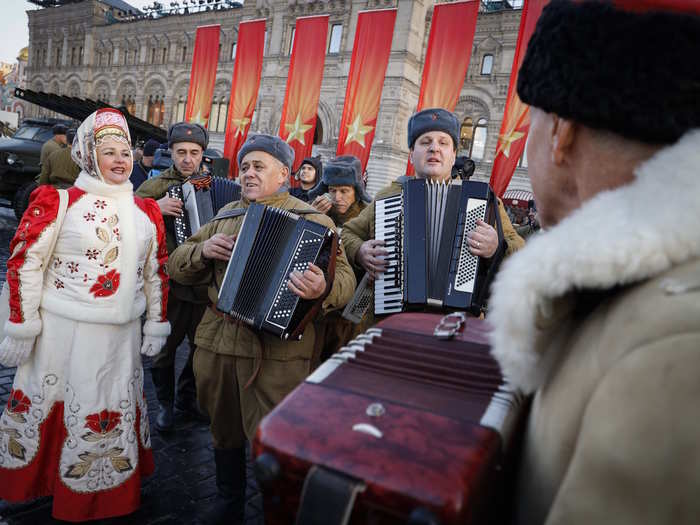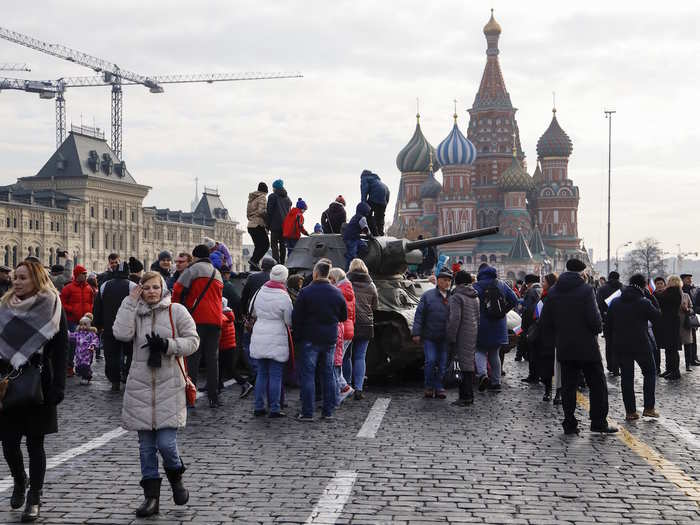The Nazi Wehrmacht had swept across western Russia after the invasion, called Operation Barbarossa, in late June 1941. By early October, German forces were within 200 miles of Moscow and had inflicted nearly 4 million Soviet casualties.
The Soviets were in bad shape. So were the Germans, whose 3-million-man invasion force had suffered more than 500,000 casualties. Hundreds of German panzers and trucks had broken down since the invasion. Differences between German and Russian railways and other logistical problems left the Nazis short of food, fuel, and ammunition.
Hitler's forces aimed to seize Moscow in Operation Typhoon. Nazi troops outnumbered the Soviets, but a flood of volunteers from Moscow flocked to the Soviet army in response to the German attack. The weather — snow and rain that turned the countryside into a muddy swamp — also benefited the defenders.
Soviet leader Joseph Stalin had ordered his government to evacuate Moscow on October 15, causing panic. But on November 7, against the advice of his generals and with Nazis just 50 miles from Moscow, Stalin ordered a parade through the city.
By the end of November, German reconnaissance troops were so close to Moscow that they could see its towers through their binoculars. But in the first days of December, it was the Soviets who struck.
Stalin had been assured that Japan wouldn't invade Siberia, allowing him to transfer elite Siberian divisions, well suited for winter warfare, to the Russian capital. Those units joined the rest of the Soviet army, bolstered by volunteers from all walks of life, to mount a counteroffensive that began on December 5.
The Germans were pushed back but not routed. Both sides took heavy losses. By February 1942, the Nazi were even able to launch their own counterattack. Stalin's and Hitler's plans for a decisive defeat of the other had failed, and the brutal fighting on the Eastern Front would drag on.
"Four-fifths of the fighting in Europe took place on the Eastern Front, and that is where the Germans suffered 90% of their casualties," Braithwaite, the British ambassador, said in 2005. "Even after D-Day, two-thirds of the German forces were in the East. If they had not been there, they would have been in France, and there would have been no D-Day. And that is why the Russians tend to think it was they who won the war, and why I tend to think that they are right."

